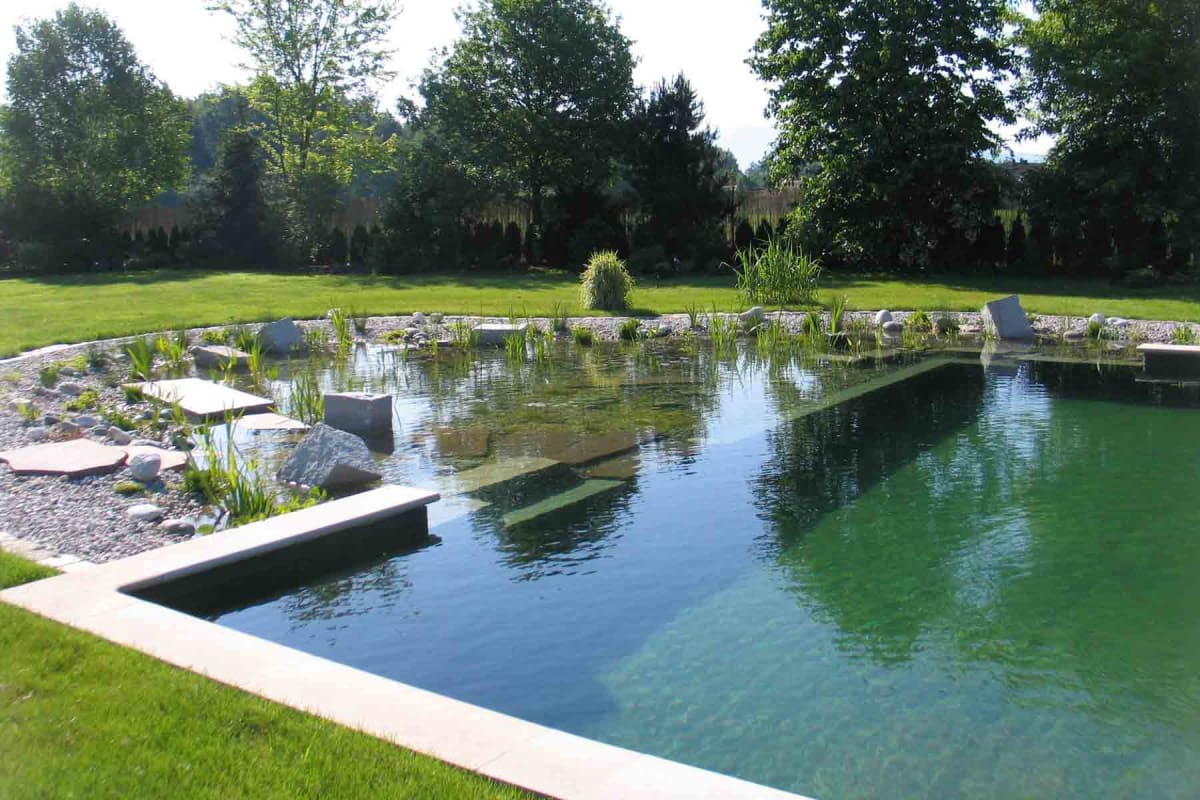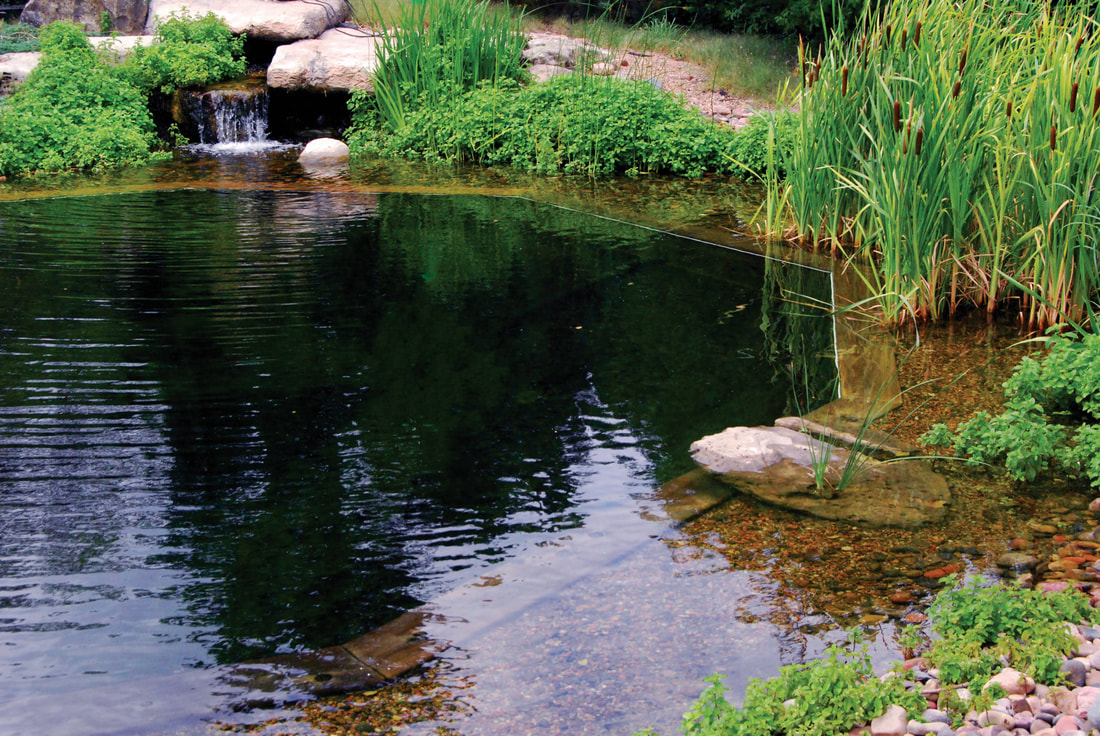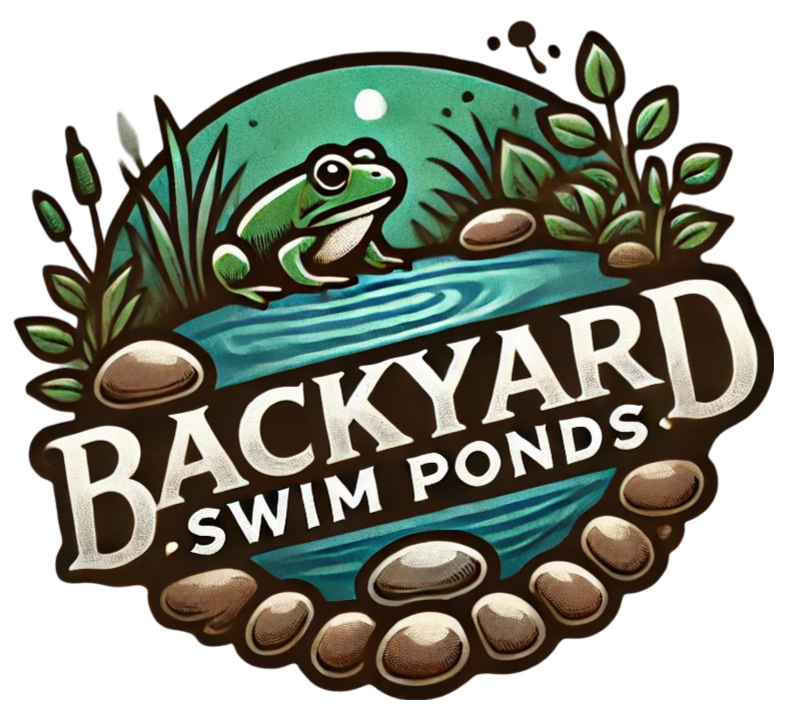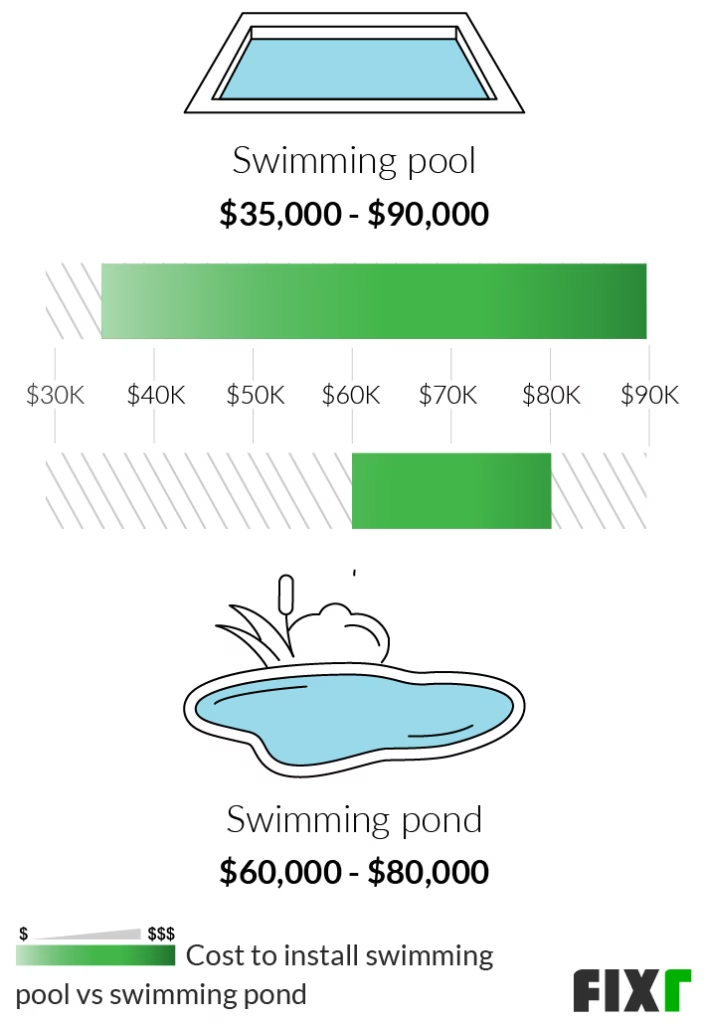Choosing between a natural swim pond and a traditional pool is a significant decision for homeowners considering pool construction. Each option presents distinct advantages and challenges, particularly when evaluated over a five-year investment horizon. This comparison aims to clarify critical aspects such as installation costs, long-term maintenance expenses, environmental impacts, aesthetic considerations, and user satisfaction. By examining these dimensions, potential pool owners can make informed decisions that align with their financial and lifestyle preferences.
Installation Costs of Natural Swim Ponds and Traditional Pools
Understanding installation costs is crucial for homeowners contemplating a swimming facility. The financial implications extend beyond initial expenditure, affecting long-term budgets and overall satisfaction.
Installation Cost Overview
-
National Average Costs:
- Natural swimming ponds generally range from $50,000 to $150,000, with an average cost of around $100,000.
- Traditional pools typically fall between $35,000 and $90,000.
-
Cost Per Square Foot:
- For natural swimming ponds, costs usually sit around $50 to $100 per square foot.
-
Regional Variations:
- Installation costs may differ across regions due to factors such as contractor availability, local regulations, landscaping requirements, and the overall cost of living.
-
Size-Based Cost Estimates:
The following chart illustrates size-based installation cost estimates for natural swimming ponds:Size (square feet) Average Installed Cost 500 $25,000 – $50,000 1,000 $50,000 – $100,000 1,500 $75,000 – $150,000 2,000 $100,000 – $200,000 -
Additional Costs:
Additional factors affecting total costs include:- Excavation: $1,000 to $5,000
- Yard leveling: $500 to $1,000
- Filtration systems: $300 to $1,700
- Labor costs for installation can average between $27,000 to $38,000.
Financial considerations demand careful planning. The following images elucidate costs associated with each pool option.
Installation Costs Summary
Cost breakdown for natural swim ponds in the Midwest USA, featuring native plants and filtration systems (Source: Fixr)

Image showing a natural swimming pool featuring lush plant life, demonstrating the aesthetic appeal and integration with nature (Source: HomeGuide)

This image showcases a waterfall feature in a natural swimming pond setting, emphasizing its natural aesthetics (Source: Total Habitat)
Long-Term Maintenance Costs: A Critical Contrast
After considering installation costs, ongoing maintenance expenses emerge as a vital aspect of pool ownership.
Comparative Maintenance Expenses
-
Annual Maintenance Costs:
- Natural swim ponds typically incur costs of $15 to $80 per month, translating to $180 to $960 annually.
- Traditional pools generally incur maintenance expenses averaging from $350 to $1,050 per year.
Over five years, this results in:
- Natural swim ponds: $900 to $4,800
- Traditional pools: $1,750 to $5,250
-
Chemical Costs:
- Natural swim ponds do not require chemical treatments; traditional pools, however, necessitate approximately $500 to $800 annually for chemicals.
Over five years:
- Natural swim ponds: $0
- Traditional pools: $2,500 to $4,000
-
Equipment Replacement:
- Natural swim ponds may require phosphate media replacement every 2-3 years, whereas traditional pools demand new pumps and filters roughly every 3-5 years.
-
Professional Servicing:
- Annual professional servicing costs for natural ponds are approximately $1,000.
- Traditional pools typically require maintenance costing around $1,200 annually.
-
Energy Costs:
- Natural swim ponds usually have lower energy expenses due to reduced pumping and filtration needs.
- Traditional pools may incur annual energy costs ranging from $300 to $500.
-
Major Maintenance:
- Natural swim ponds undergo full service for plant rejuvenation every 3-5 years.
- Refinishing concrete pools typically happens once every ten years, costing around $4,000.
The ongoing costs associated with maintenance significantly influence overall pool ownership experiences and satisfaction.
Maintenance Costs for Traditional Pools

Pool service technician cleaning a traditional swimming pool, showcasing the tools and chemicals employed for maintenance (Source: Isteam)
Service Frequency Comparison

Infographic comparing service frequency of natural swim ponds versus traditional pools over a 5-year period (Source: Total Habitat)
Environmental Impacts: Can Nature Coexist with Leisure?
Environmental considerations play an important role in the pool versus pond debate. Each option carries distinctive implications regarding sustainability, chemical usage, water conservation, and habitat effects.
Evaluating Environmental Considerations
-
Chemical Usage:
- Natural swim ponds require no chemical treatments, effectively alleviating concerns surrounding toxicity and environmental harm.
- In contrast, traditional pools depend heavily on chlorine and other chemicals, which may adversely affect local ecosystems.
-
Water Conservation:
- Natural swim ponds are generally designed to require less frequent water replacement and can utilize rainwater effectively.
- Traditional pools consume larger quantities of water due to frequent draining and refilling.
-
Energy Consumption:
- The energy requirements for natural pools tend to be lower, mainly due to reduced filtration needs.
- In comparison, traditional pools exhibit higher energy consumption owing to pumps, filters, and heating systems.
-
Biodiversity:
- Natural swim ponds can support local wildlife, promoting biodiversity, while traditional pools contribute little to their surrounding environments.
-
Runoff and Carbon Footprint:
- Natural swim ponds generate no chemical runoff, creating positive outcomes for surrounding soils and water systems.
- Traditional pools, however, often result in higher environmental impacts through chemical runoff and carbon emissions.
-
Long-term Sustainability:
- Natural swim ponds generally exhibit a lower long-term environmental impact owing to their self-sustaining properties.
- Traditional pools require continuous chemical inputs and energy consumption, which can lead to increased long-term consequences.
The environmental advantages of natural swim ponds have attracted interest from homeowners who prioritize sustainable living and ecological well-being.
Ecosystem Effects of Natural Swim Ponds

Diverse ecosystem in a natural swim pond, featuring native plants and wildlife, such as frogs, illustrating ecological benefits (Source: Total Habitat)
Chemical Usage in Traditional Pools

Chlorinated swimming pool with chemical containers, illustrating the types of chemicals used for maintenance (Source: Total Habitat)
User Experience: A Matter of Satisfaction and Enjoyment
User satisfaction is a critical consideration for homeowners; how each option aligns with recreational goals can significantly influence decision-making.
Analysis of User Satisfaction Rates
-
User Satisfaction:
- Surveys indicate that over 70% of natural swim pond owners report high satisfaction levels due to the eco-friendly features and reduced maintenance demands.
-
Health Benefits:
- Research shows that 85% of natural pool users experience fewer skin and eye irritations compared to traditional pools, emphasizing health benefits.
-
Aesthetic Appeal:
- According to surveys, 88% of natural pool owners rated their pools’ aesthetics positively, whereas only 62% of traditional pool owners offered similar assessments.
-
Usage Rates:
- Natural pool owners report a 30% higher year-round usage rate, with many noting unique seasonal features, such as winter ice skating.
-
Wildlife Attraction:
- Many natural pool owners enjoy observing local wildlife, with 82% reporting positive interactions with beneficial insects and birds.
-
Cost Satisfaction:
- A larger proportion of natural pool owners express contentment with long-term costs compared to those owning traditional pools.
These experiences highlight the importance of evaluating user engagement and potential lifestyle improvements arising from the choice of pool type.
User Experience with Natural Swim Ponds

Joyful family swimming and relaxing at a natural swim pond, showcasing user satisfaction and enjoyment (Source: Total Habitat)
Health Benefits of Natural Swim Ponds

Adults enjoying a swim in a natural swim pond, highlighting health benefits and natural conditions (Source: Total Habitat)
Regulatory Factors: Understanding Local Approvals
Homeowners must be aware of local regulations and permitting requirements when considering pool options. Each type presents unique challenges and compliance requirements that can influence future investments.
Permitting Process Overview
-
General Requirements:
- Both natural swim ponds and traditional pools generally require building permits, including electrical and plumbing permits.
-
Specific Regulations for Natural Swim Ponds:
- Local health departments may classify them as “special purpose pools,” which could entail additional permitting considerations.
-
Safety Features:
- California mandates specific safety features for traditional pools, including enclosures and self-closing gates, to ensure compliance.
-
Variation in Local Regulations:
- Permitting processes can differ significantly across various jurisdictions, necessitating consultation with local authorities.
-
Zoning and Applications:
- Typical zoning restrictions may dictate where natural swim ponds can be constructed, and local ordinances may detail specific requirements unique to each area.
Adhering to permitting and regulatory obligations is essential for ensuring compliance and successful installation.
Permitting Processes for Natural Swim Ponds

City building department in California, focusing on the permitting process for natural swim ponds, with visible signage (Source: Total Habitat)
Regulatory Differences Between Natural Swim Ponds and Traditional Pools

Brochure or guideline pamphlet displaying regulatory differences between natural swim ponds and traditional pools in California (Source: Total Habitat)
Conclusion: Weighing the Choices
In summary, both natural swim ponds and traditional pools present unique sets of benefits and challenges that homeowners must navigate. While initial installation costs may lean towards higher expenses for natural swim ponds, their ongoing maintenance often proves to be significantly lower. Environmental considerations generally favor natural ponds, while traditional pools pose challenges related to chemical usage and energy consumption. Additionally, user satisfaction tends to favor natural swim ponds, demonstrating their appeal in aesthetics and ecological advantages.
Ultimately, the decision between natural swim ponds and traditional pools represents a critical investment that extends beyond mere financial analysis; it reflects the aspirations homeowners hold for their outdoor spaces and lifestyles. By closely examining both options, homeowners can shape their vision of leisure and recreation, ensuring their investment aligns with their broader goals and personal values.

